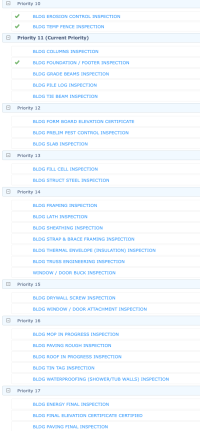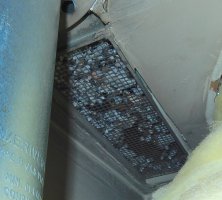jar546
CBO
I wish we had more participants, but with what we have, these are the overall results.
1. Inspections Per Day
Survey Question:How many inspections per day do you or your inspectors perform on average?
Survey Responses:
- 47.1%: Perform 1-10 inspections per day
- 23.5%: Perform 11-20 inspections per day
- 17.6%: Perform 21-30 inspections per day
- 11.8%: Perform 31-40 inspections per day
- 1-10 inspections per day (47.1%):
This is the most common range and indicates that nearly half of inspectors are working at a pace where they perform fewer inspections, possibly due to factors such as inspection complexity, larger geographic areas to cover, or longer travel times between stops. This group likely has more detailed inspections or handles a smaller volume of inspections efficiently spread out during the day. - 11-20 inspections per day (23.5%):
This group makes up almost a quarter of respondents. Performing 11-20 inspections indicates a moderate workload. These inspectors may handle a balance between complex and routine inspections, which allows them to cover more inspections in a single day without being overwhelmed by time constraints. - 21-30 inspections per day (17.6%):
A smaller portion of inspectors can handle this range, representing inspectors or teams who are either highly efficient or operate in environments with less complexity per inspection. The ability to handle this volume suggests either a high level of efficiency or a focus on routine, simpler inspections. - 31-40 inspections per day (11.8%):
A small but notable group performs a high number of inspections per day. This group likely focuses on quick or straightforward inspections that allow for more volume, or they may operate in areas where stops are close together, enabling them to quickly move from one inspection to another.
The majority of inspectors (70.6%) perform fewer than 20 inspections per day. This suggests that most inspectors focus on either moderately detailed or geographically dispersed inspections. The smaller group handling more than 20 inspections per day (29.4%) may be operating under conditions that allow for rapid completion of inspections, such as having more routine inspections or covering smaller geographical areas.
2. Stops Per Day
Survey Question:How many stops per day per inspector?
Survey Responses:
- 20%: 1-5 stops per day
- 46.7%: 6-10 stops per day
- 26.7%: 11-15 stops per day
- 6.7%: 16-20 stops per day
- 1-5 stops per day (20%):
Inspectors in this range are making fewer stops, which suggests they may be handling more complex inspections or covering larger areas. Fewer stops likely indicate that inspections at each stop take more time, potentially because of larger projects, more thorough inspections, or a combination of both. This group likely has the highest complexity of inspections or the largest territories to cover. - 6-10 stops per day (46.7%):
This is the most common range, indicating that nearly half of the inspectors manage their time in a way that allows for multiple stops but not an overwhelming number. These stops may include both routine and complex inspections, suggesting a balanced approach where efficiency is prioritized but thoroughness is maintained. This group represents the average inspector balancing both time and complexity. - 11-15 stops per day (26.7%):
These inspectors are making a high number of stops, likely focusing on simpler, faster inspections or operating in areas with less travel time between stops. This range could indicate areas of higher density or a system in place that maximizes inspection efficiency. - 16-20 stops per day (6.7%):
A small group of inspectors makes the most stops per day, representing highly efficient inspectors or those working in densely packed areas. These inspectors likely deal with straightforward inspections or multiple inspections at one stop, allowing them to maximize their time.
The data shows that 46.7% of inspectors fall into the 6-10 stops per day category, suggesting this is the most efficient group that balances the volume of stops and inspection quality. The inspectors performing 1-5 stops (20%) are likely dealing with more complex inspections that require more time. On the other hand, the inspectors making 11-20 stops (33.4%) are either highly efficient or focused on quicker, more routine inspections.
3. Efficiency Correlation Between Inspections and Stops
The number of stops directly impacts efficiency, as some stops can involve multiple inspections, which streamlines the process. Based on the data:- Inspectors with fewer stops but more inspections per day are likely more efficient since they spend less time traveling between stops.
- The group performing 1-10 inspections per day (47.1%) overlaps with the group making 6-10 stops per day (46.7%), showing that these inspectors are performing a balanced workload and may be focusing on inspections requiring more detail.
- Inspectors performing 11-20 inspections per day (23.5%) likely fall into the group making 11-15 stops per day (26.7%), indicating they are handling a larger volume of routine inspections spread across multiple stops.
- The 11.8% performing 31-40 inspections per day likely corresponds to those making 16-20 stops per day (6.7%), indicating a highly efficient, fast-paced inspection routine in a dense or highly streamlined environment.





